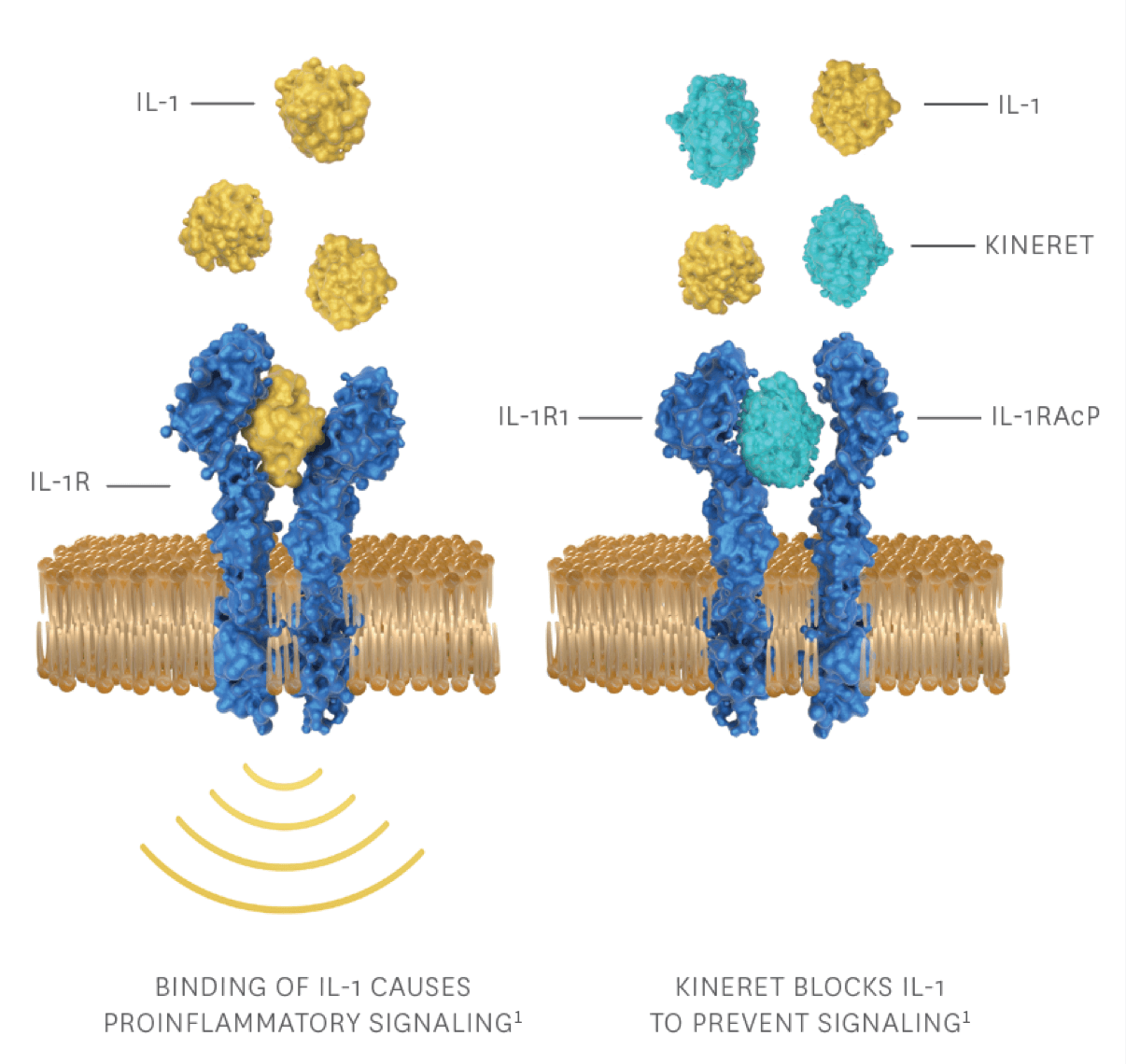DIRA
KINERET for DIRA
DIRA is ultra-rare. With KINERET, his hope doesn't have to be1
KINERET has been demonstrated to be effective for the treatment of DIRA.1
DIRA is an ultra-rare pediatric autoinflammatory disease1
DIRA is an autosomal recessive disorder caused by mutations in the IL1RN gene, leading to loss of production and function of the IL-1Ra.1
- DIRA generally presents at or near birth and can escalate to life-threatening inflammation2
- Symptoms of DIRA include swelling of bone tissue, bone pain and deformity, swelling of the tissues around the bones, and skin rash that can cover most of the body3
- DIRA is often misdiagnosed as infectious osteomyelitis with pustulosis and systemic inflammation, leading to ineffective treatment with antibiotics4
- DIRA has a 25% mortality rate, and there are currently no known patients who, without treatment, have reached adulthood2

A swift diagnosis and initiation of appropriate treatment are essential to improving a DIRA patient’s prognosis.2
DIRA is driven by IL-1
- IL-1 (IL-1α and IL-1β) is a prototypic proinflammatory cytokine2
- Secretion of IL-1 has an important role in systemic inflammation and in the signs and symptoms of DIRA1,2
- DIRA is an autosomal recessive monogenic autoinflammatory disease caused by mutations in the IL1RN gene, leading to loss of function and secretion of IL-1Ra1,2
- The deficiency of IL-1Ra results in unopposed IL-1α and IL-1β proinflammatory signaling, causing severe systemic inflammation with skin and bone involvement1



